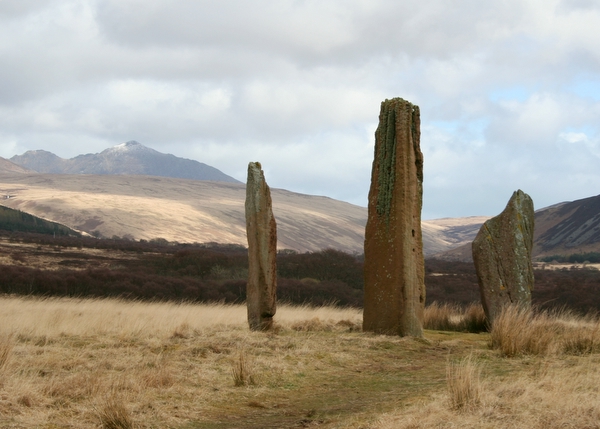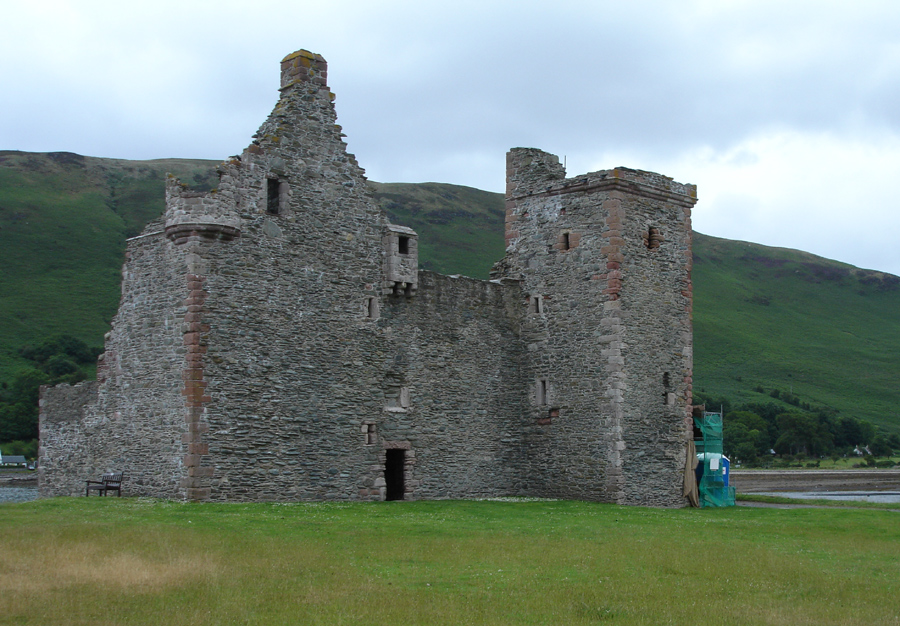
In Scotland's cold sea waters lay several islands with castles, stone circles, ruins, and plenty of folklore.
On the Isle of Arran, located off Scotland's southwest coast, travelers can visit Machrie Moor, which boasts several stone circles and some free-standing 18-foot-tall stones. Adding to the island's appeal and mystery is the 16th-century Brodick Castle, which still houses furnishings and art from its many inhabitants; the ruins of Lochranza Castle; and Culzean Castle & Country Park, which features an armory, ruins, and extensive grounds.
Arran is a small island, 20 miles long and 56 miles round, located off the south-west coast of Scotland. Ferries run from the Scottish mainland to the Isle of Arran. Most people reach the island via Ardrossan which has a direct rail service from Glasgow.
History
The first people on Arran to leave visible signs of their life and times here were the Neolithic people, who lived on the island in the period between 4,500BC and 2,000BC. They were farmers, and traces of their field systems have been found on Arran. However, they have left their most distinct legacy on Arran in the form of stone circles, standing stones and cairns. We do not know what these monuments were used for, but it is safe to assume that they had some kind of ceremonial function.

Machrie moor standing stones is a small ancient circle protected by a stone wall. Continue on the footpath and you will reach the main site, three-quarters of a mile across the fields.

Robert Pollock has produced an excellent guide with diagrams which details these and other circles on this site. Two of the circles have recently been excavated, and the amount of peat growth over the original prehistoric ground surface can be seen as a tidemark on the stones. Indeed one of the circles had completely disappeared under the peat.

Druid Stone is likely to be a Neolithic or Bronze age stone, despite its local association with the Iron Age priesthood. A druid was a member of the priestly and learned class in the ancient Celtic societies of Western Europe, Britain and Ireland.
 The Ruins of Lochranza Castle are located north of Brodick. The castle was a former hunting lodge of the Scottish Kings. It has been claimed that Lochranza Castle has literary connections, being used as the basis for the castle in the Tintin adventure "The Black Island".
The Ruins of Lochranza Castle are located north of Brodick. The castle was a former hunting lodge of the Scottish Kings. It has been claimed that Lochranza Castle has literary connections, being used as the basis for the castle in the Tintin adventure "The Black Island".

Brodick Castle is made up of red sandstone and it lies at the foot of Goatfell Mountain 1.5 miles out of Brodick; the main port on the Isle of Arran off the west coast of Scotland.







0 Comments:
Post a Comment
We appreciate comments, but we delete SPAM.